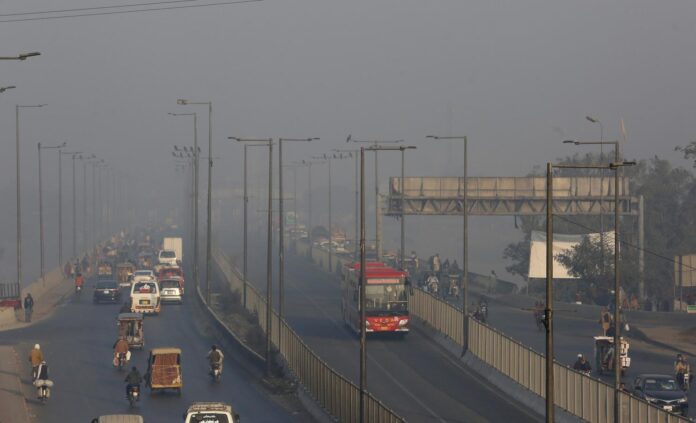For the second consecutive day, Lahore, Pakistan’s bustling provincial capital, has topped the list of the world’s most polluted cities, with air quality levels that have alarmed residents and health experts alike. On November 2, 2024, the city’s Air Quality Index (AQI) soared beyond the hazardous threshold, reaching an alarming peak of 1,194 before later dropping to 766. The persistent poor air quality has continued into November 3, with the AQI at 1,073, positioning Lahore well above any safe limits and intensifying public concern
The AQI, which measures various pollutants, primarily highlighted the presence of PM2.5 particles—ultrafine particulates with a significant impact on respiratory and cardiovascular health. Levels of PM2.5 pollutants in Lahore were measured at 613, exceeding the World Health Organization’s (WHO) safety limit by over 120 times. This sustained exposure poses severe health risks, potentially leading to conditions such as stroke, heart disease, lung cancer, and chronic respiratory ailments
This season’s pollution crisis in Lahore is a product of multiple factors converging to create a dense, hazardous smog that suffocates the city’s 14 million residents. Emissions from vehicles and industrial sources, compounded by the use of low-grade fuels, contribute heavily to the city’s pollution. Seasonal agricultural practices, especially the burning of crop stubble in Punjab’s rural areas, release significant amounts of smoke into the atmosphere. When mixed with cooler weather, these emissions form a persistent smog that traps pollutants close to the ground, significantly diminishing air quality
Despite measures by the Punjab government to mitigate the situation, such as enforcing a “Green Lockdown,” pollution levels have continued to surge. This lockdown involves curbing construction activities and restricting the use of older, higher-emission vehicles like “Qingqi” rickshaws. Additionally, the government has limited the use of charcoal and wood-burning food outlets without proper emission control systems
However, these interventions have not yielded the expected reduction in pollution levels.
Residents of Lahore are advised to remain indoors as much as possible, wear protective masks outdoors, and maintain practices such as washing their faces frequently and staying hydrated to combat the effects of smog exposure. Nonetheless, individuals who must work outside, including traffic wardens and street vendors, report significant difficulties such as breathing problems, eye irritation, and a persistent cough, which affect their overall productivity and well-being
Efforts to address the smog crisis include government crackdowns on vehicles that fail to meet emission standards, while schools have been instructed to avoid outdoor assemblies and playtime to safeguard children. The authorities have also mandated mask-wearing for the general public and reduced other outdoor activities. Yet, despite these steps, the situation persists, highlighting the challenges involved in managing large-scale environmental issues
The broader region, including other cities in central and southern Punjab such as Multan, Gujranwala, and Bahawalpur, has also been grappling with deteriorating air quality. The Pakistan Meteorological Department has forecast continued dry weather, which is likely to exacerbate pollution levels as the smog remains trapped due to atmospheric conditions
The environmental crisis in Lahore reflects a larger regional problem, with Indian cities like New Delhi facing similar challenges. Shifts in wind patterns contribute to transboundary pollution, exacerbating the situation on both sides of the border. In response, Punjab’s environmental authorities have suggested regional cooperation to address the shared problem of air quality degradation
The ongoing crisis underscores an urgent need for more effective, long-term strategies. This includes stricter regulatory measures, public awareness campaigns, and enhanced cross-border cooperation. Without comprehensive action, cities like Lahore will continue to face severe environmental and health consequences that not only disrupt daily life but threaten public health on a wide scale


